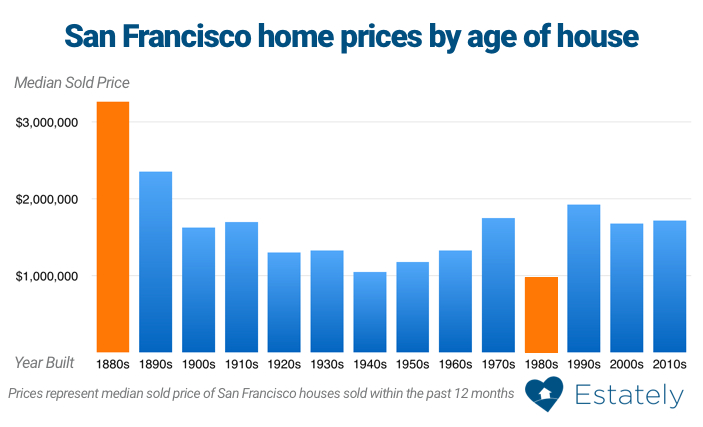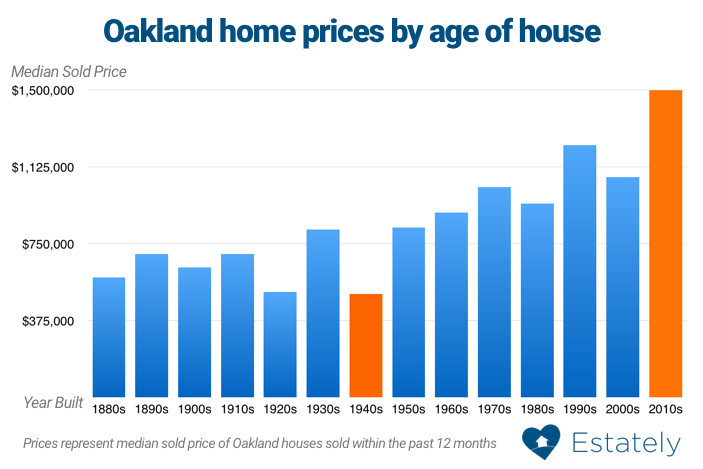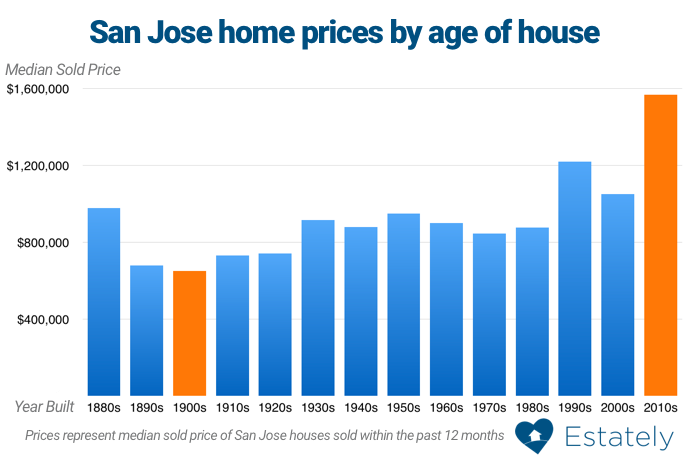Bay Area home prices by age of house
Bay Area homebuyers definitely long for the home prices of previous decades, but did you know that the decade a house was built can be a good predictor of how much a house will cost? Here at Estately we looked at Bay Area home sales from the past year to determine the median sale price for houses in San Francisco, Oakland, and San Jose for every decade since the 1880s. The results vary significantly for each city.
As for San Francisco, kudos to anyone who had the foresight to buy a house 121 years ago capable of withstanding the 1906 earthquake and fire. That house would be a goldmine now. However, if you’re not a 125-year-old psychic, and you want to buy a San Francisco house for less than $1,000,000, you had better fall in love with 1980s home design. That’s the only decade that produced homes with a median price of less than $1,000,000.
Unfortunately, houses built in the 1980 made up less than 1% of those sold in the last year. The decade with the most houses that sold in the past year were built in the 1920s (median house price of $1.3 million). And, just to really pile on the San Francisco housing market and its lack of new housing, only 32 homes built after 2010 sold in the past 12 months, compared to the 460 homes that sold that were built in the 1920s.
Oakland houses built in the 1940s may have 70+ years of wear and tear on them, and they don’t offer the same low prices that once tempted first-time home buyers a generation ago, but they’re still more affordable than newer Oakland houses. Roughly 12.2% of homes that sold in the past year were built in the 1940s, more than four times more than those built after 2010.
If you were one of the 20,000-30,000 people living in San Jose between 1900 and 1910, and you were visited by a real estate blogger from the future, you would have been depressed to learn your house would not provide immense wealth to your great-grandchildren like your neighbors across the Bay. However, you might have taken comfort in knowing that those same great-grandchildren will probably pay a hundred times more to buy that exact same house. There’s some validation in that.
Unfortunately for frugal home buyers in San Jose, only 6.5% of homes that sold in the past year were built in 1900s. Nearly half of all homes that sold last year were built in the 1960s and 1970s, so coming to terms with shag carpets and linoleum floors could be important for would-be San Jose home buyers.
If somehow all of this hasn’t discouraged you from searching for a Bay Area home then check out Estately.com.


